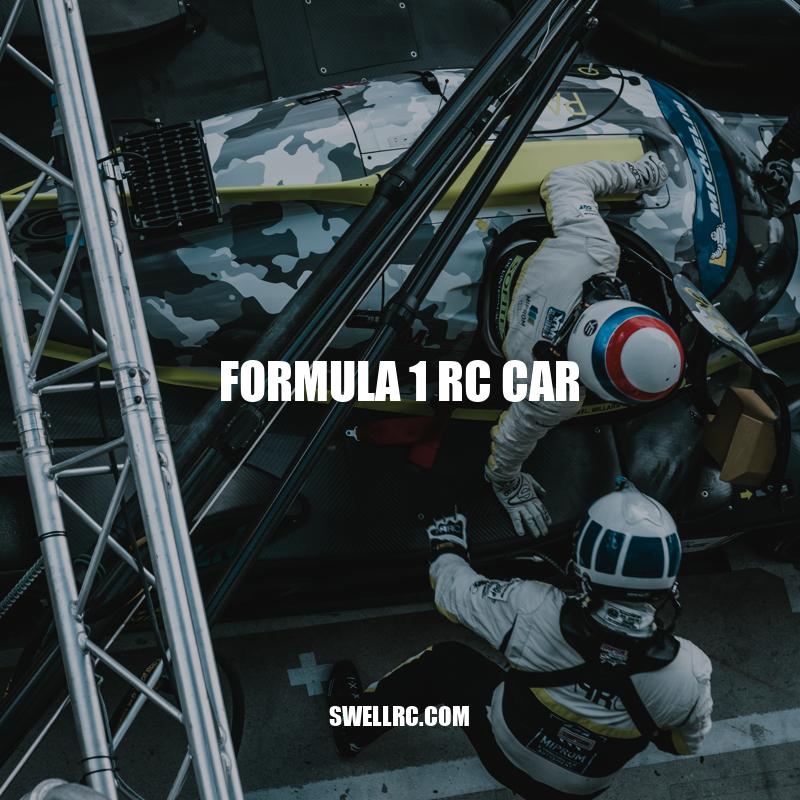Formula 1 RC Cars: Facts and Beginner’s Guide
Formula 1 RC Car: Everything You Need to Know
Remote control cars have fascinated hobbyists of all ages for decades. They offer a fun way to engage with technical skills and bring a rush of excitement as drivers compete against one another. As technology progresses, remote control cars continue to evolve. The Formula 1 RC car is the perfect example of how tiny cars can have immense power and speed. These cars grab the attention of both enthusiasts and beginners, with their impressive performance and realistic designs. Formula 1 RC cars are miniature replicas of real Formula 1 racing cars that are operated using a remote control, offering an immersive experience for racing enthusiasts who love the thrill of speed. In this article, we will explore what Formula 1 RC cars are, how they are built, types of Formula 1 RC cars, and how to race them.
Formula 1 RC cars are miniature versions of real Formula 1 racing cars that are remote-controlled by enthusiasts. Here are some key characteristics of Formula 1 RC cars:
- Formula 1 RC cars are typically 1/10 or 1/12 the size of a real Formula 1 car.
- They can reach speeds of up to 60mph.
- The chassis is made from carbon fiber or a carbon composite material.
- The body is made from Lexan, a polycarbonate material that is durable yet lightweight.
Formula 1 RC cars have become increasingly popular among hobbyists due to their impressive performance and realistic designs. Numerous websites sell Formula 1 RC cars with different features, and you can compare them to find the best one for your needs. The websites offer a vast range of options for both beginners and advanced enthusiasts, with varying prices. Additionally, some websites also offer comprehensive information about the different features, methods of operation, and specifications of the products, making it easier for buyers to make an informed decision.
You can find Formula 1 RC cars from popular brands like Kyosho, Tamiya, and Team Associated. Furthermore, some enthusiasts also customize their Formula 1 RC cars with different components like tires, motors, and batteries to improve their performance.
How are racing cars different from normal cars?
Racing cars and normal cars have many differences. Here are some of the major differences between them:
| Racing Cars | Normal Cars |
|---|---|
| Built for speed and performance | Built for comfort and utility |
| Lighter in weight | Heavier in weight |
| Designed for aerodynamics and downforce | Designed for minimal wind resistance |
| Equipped with high-performance engines and parts | Equipped with standard engines and parts |
| Have roll cages and other safety features for high-speed crashes | Normal car safety features such as airbags and seat belts |
If you want to know more about racing cars and their specifications, you can check out websites like Motorsports.com or Car and Driver. They provide detailed reviews and analysis of the latest racing cars and their performances.
Formula 1 RC cars are precision-engineered vehicles that are built to function like the real thing. Here are the key features of their design:
- The Chassis: The chassis of Formula 1 RC cars is made of carbon fiber or a carbon composite material to make it lightweight and strong.
- The Body: The body of Formula 1 RC cars is made of Lexan, a polycarbonate material that is durable yet lightweight.
- The Suspension: The suspension system is designed to be precise and responsive to ensure better maneuverability and handling.
- The Steering: The steering system is also designed to be precise, with numerous adjustments that can be made to tune it according to the driver’s preferences.
Moreover, some Formula 1 RC cars come with additional features such as LED lights, adjustable wings, and a detailed engine replica. The vehicles’ speeds and performance depend on the motor type and battery they use. To operate them, an enthusiast requires a remote control to steer the vehicle and accelerate or brake as required.
Here is a table that gives specifications for three different Formula 1 RC cars:
| Model | Scale | Speed | Cost |
|---|---|---|---|
| Tamiya 1/10 Formula E Gen2 SE | 1/10 | 30mph | $280 |
| Xray X1 2021 | 1/10 | 40mph | $400 |
| Roche Rapide F1 EVO-2021 | 1/10 | 45mph | $500 |
If you’re new to the world of Formula 1 RC cars, some comprehensive websites offer beginner guides that offer all the information you need to get started. Some websites also offer buyer guides, through which you can compare the different features of various models, making it easy for you to make an informed decision.
What is a car body made of?
The car body is typically made of various metals, including steel, aluminum, and magnesium. These metals are chosen for their strength, durability, and weight properties. While the exact composition and thickness of the body may vary depending on the make and model of the car, most car bodies consist of several layers of these metals, including an outer panel, a frame, and a series of reinforcing supports. Some cars may also feature composite materials or plastics in different sections of the body for additional strength or weight savings. Overall, the metal construction of car bodies allows for reliable performance, safety, and longevity. For more information on car types, materials and other relevant data, visit automotive websites such as caranddriver.com, edmunds.com or autotrader.com.
Final Thoughts
Formula 1 RC cars are a wonderful way to enjoy the thrill of high-speed racing without the hefty investment that real racing requires. These cars can be a fun hobby for both children and adults alike, and they can be customized and adjusted according to your individual tastes and preferences.
Additionally, Formula 1 RC cars have been used in professional settings, including on movie sets and by automotive manufacturers to showcase their products. These miniature cars are also used for educational purposes by teaching children the principles of engineering, design, and aerodynamics. These cars not only offer endless hours of entertainment, but also serve as a tool for learning.
Whether you choose to race Formula 1 RC cars competitively, for fun, or as an educational tool, you’ll be joining a community of passionate enthusiasts who share your love for remote control car racing. With its impressive engineering and attention to detail, the Formula 1 RC car is a remarkable feat of design, and a must-have for any remote control car enthusiast.



